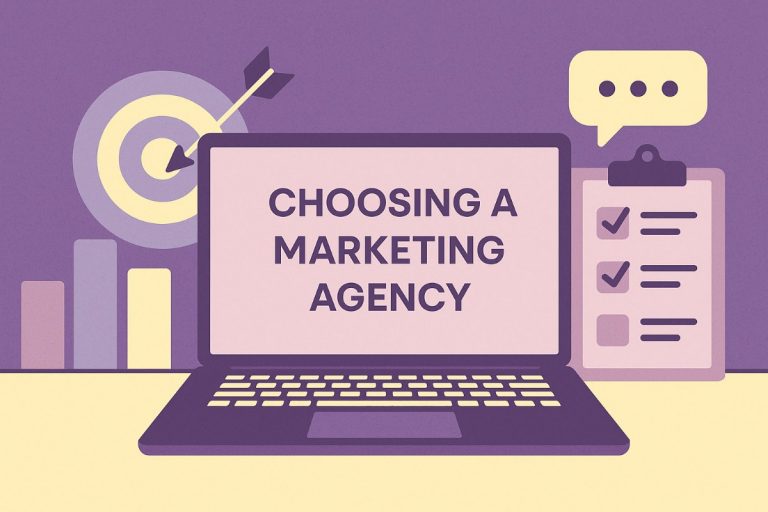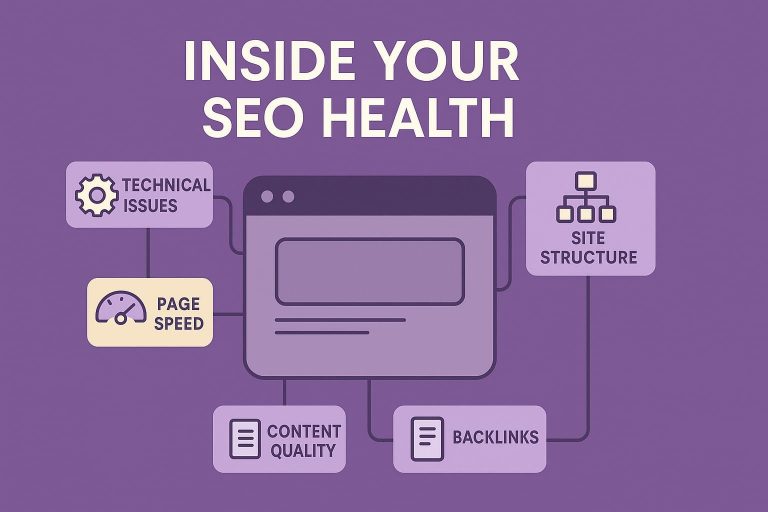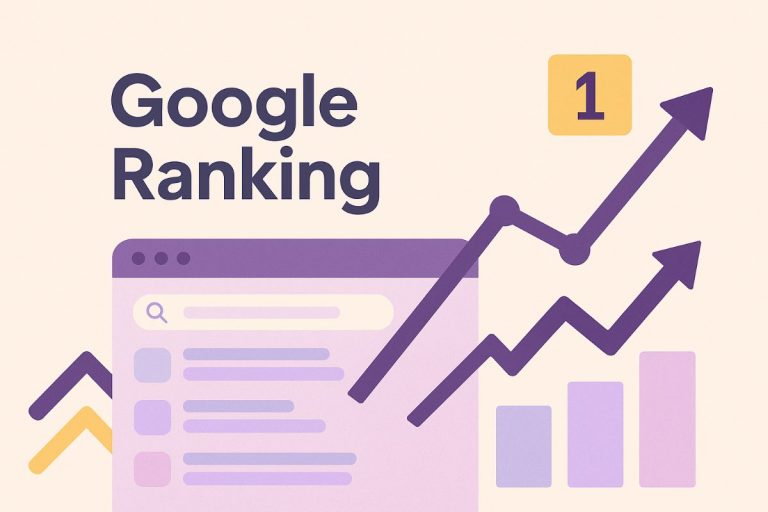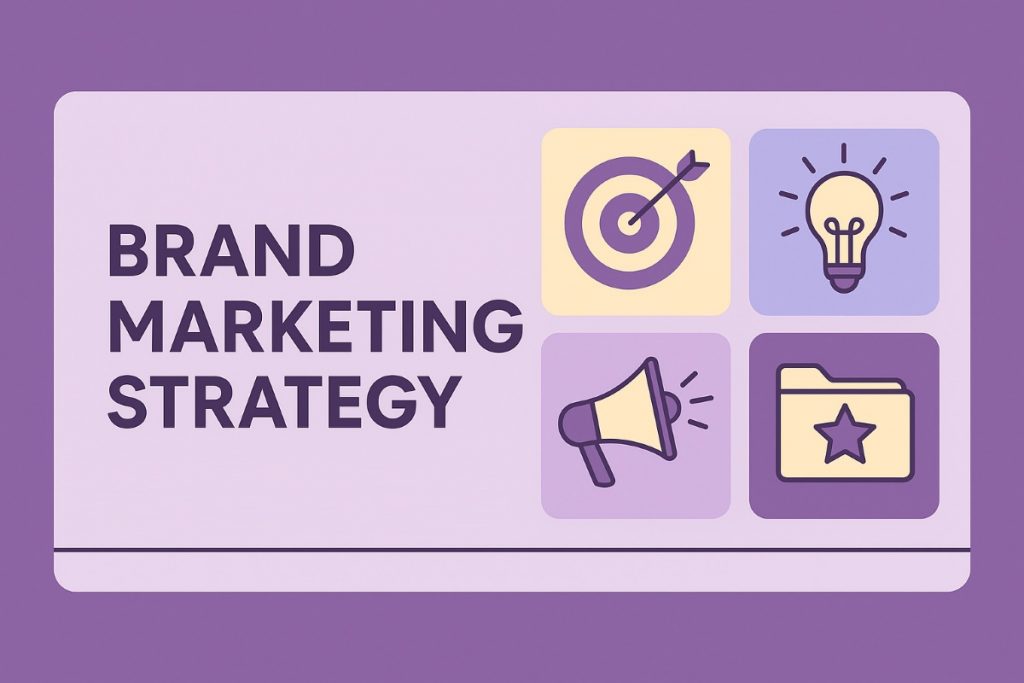
- What Is a Brand Strategy? Beyond Logos and Colors
- The Business Impact of Strategic Branding
- The Core Elements of an Effective Brand Strategy
- How to Develop Your Brand Strategy from Scratch
- Implementing Your Brand Strategy Across Touchpoints
- Measuring Brand Strategy Success
- Branding Methods and Approaches
- Common Brand Strategy Pitfalls and How to Avoid Them
- Conclusion: Your Brand Strategy Roadmap
- Brand Strategy Resources and Tools
- Frequently Asked Questions About Brand Strategy
Two companies enter the market with identical products, similar pricing, and comparable features. One becomes a billion-dollar household name; the other fades away. The difference? Brand strategy.
Consider Apple versus the many tech startups that never caught on, or Nike versus the countless athletic brands that disappeared. The leaders understood a core principle — effective brand marketing strategy isn’t about sleek logos or clever slogans. It’s about establishing a distinct, lasting position in your customer’s mind that shapes every business decision.
What Is a Brand Strategy? Beyond Logos and Colors
Most businesses mistake brand strategy for visual design, treating it as decoration instead of the strategic foundation it is. A strong brand strategy definition outlines a long-term plan for building a successful brand that achieves key business goals. It acts as your strategic planning framework, guiding how you compete, communicate, and create value through your business strategy.
Ultimately, brand strategy defines who you are, who you serve, and why it matters. It builds customer loyalty, drives sustainable competitive advantage, and fuels growth. At LeadCraft, we’ve seen how strategic branding and SEO services together transform businesses into powerful, high-performing brands.
The Business Impact of Strategic Branding
Here’s what strategic branding actually delivers when executed properly:
- Premium pricing power — Strong brands command 20-30% price premiums over generic alternatives
- Customer acquisition efficiency — Branded businesses see 23% lower customer acquisition costs
- Employee retention and attraction — Companies with strong brand management reduce hiring costs by up to 50%
- Crisis resilience — Well-positioned brands recover from setbacks 2.5x faster than weak brands
- Organic growth acceleration — Brand value compounds, creating exponential returns over time
- Market expansion opportunities — Strong brands enter new markets with built-in credibility
The data speaks volumes about branding and marketing strategy working in tandem. Companies investing in brand strategies consistently outperform the S&P 500 by 200% over 10-year periods. That’s not correlation — it’s causation backed by decades of market evidence.
The Importance of Strategic Branding for Long-Term Success
Strategic branding drives sustainable business success, helping brands endure market shifts and competitive threats. Strong companies build brand trust, turning customers into advocates through powerful word-of-mouth marketing.
When your brand solves real problems, business growth accelerates, and customer loyalty deepens. True brand loyalty comes from consistently delivering value across every touchpoint, creating advocates who amplify your reach and reduce marketing costs.
The Core Elements of an Effective Brand Strategy
Every powerful strategy rests on fundamental pillars that work together to create market differentiation. While strategies vary across industries, these brand strategy components remain universal. Understanding types of branding and various strategies helps you build a framework that’s both distinctive and defensible.
The interplay between these brand elements creates your unique brand architecture — the structural framework that ensures consistency while allowing flexibility. LeadCraft’s data-driven approach to brand development has shown that companies with clearly defined frameworks generate 50,000+ qualified leads monthly by aligning every element toward measurable outcomes.
Purpose and Brand Positioning
Brand positioning begins with your core purpose — the reason you exist beyond profit. It’s your unique selling proposition that makes you essential to customers. Successful types of brands craft a clear positioning statement defining their place in the market. LeadCraft’s enterprise SEO delivers measurable ROI. A strong value proposition and sharp market differentiation build a lasting competitive edge.
Effective vs. Ineffective Brand Positioning Statements
| Aspect | Ineffective Positioning | Effective Positioning | Why It Matters |
|---|---|---|---|
| Specificity | "We serve businesses of all sizes with quality solutions" | "For B2B SaaS companies with 50-500 employees who struggle with customer churn" | Specific positioning attracts ideal customers while repelling poor fits, increasing conversion rates |
| Differentiation | "We provide excellent customer service and innovative products" | "The only CRM that guarantees implementation in 14 days or your money back" | Clear differentiation creates a defensible market position competitors can't easily copy |
| Target Audience | "For anyone who needs marketing help" | "For venture-backed startups preparing for Series A who need to demonstrate marketing ROI" | Precise audience definition enables targeted messaging that resonates deeply |
| Value Proposition | "We help companies grow faster" | "We reduce customer acquisition costs by 40% through AI-powered lead scoring" | Quantifiable value justifies premium pricing and accelerates decision-making |
| Proof Points | "We're trusted by many clients" | "Trusted by 47 Fortune 500 companies, with average client retention of 5.2 years" | Specific proof points build credibility and reduce perceived risk |
| Emotional Connection | "We make your life easier" | "We give founders their weekends back by automating 80% of routine marketing tasks" | Emotional benefits create stronger brand loyalty than functional features alone |
| Competitive Frame | "Better than other agencies" | "Unlike traditional agencies that bill hourly, we guarantee specific outcomes or you don't pay" | Clear competitive positioning helps prospects understand your unique space in the market |
| Problem Focus | "Full-service digital marketing" | "We solve the iOS 14 attribution crisis for e-commerce brands spending $50K+ monthly on ads" | Problem-focused positioning attracts actively searching buyers with urgent needs |
| Personality | "Professional and reliable" | "The brutally honest marketing partner who tells you what others won't" | Distinctive personality attracts aligned customers and repels mismatched prospects |
| Measurability | "Improve your marketing results" | "Generate 50+ qualified leads monthly within 90 days" | Measurable promises enable accountability and demonstrate confidence |
Brand Personality and Values
Effective brand development strategies create personalities customers relate to. Your brand personality grows from authentic corporate values that shape communication, partnerships, and decision-making.
Different types of brands succeed with distinct archetypes, but brand consistency is essential. Whether building rebellious or nurturing trademarks, alignment between your brand archetype and audience expectations fuels emotional branding and loyalty.
Strong brand building strategies turn stated values into lived actions. When corporate values drive choices — from suppliers to service — authenticity builds brand trust and lasting advocacy.
Visual Identity and Expression Systems
While product branding strategy extends far beyond aesthetics, your visual identity serves as the immediate expression of your strategic positioning. Every element of visual design — from typography choices to color theory applications — should reinforce your strategic narrative. This isn’t decoration; it’s strategic communication through visual design that creates instant recognition and emotional connection.
Brand development marketing requires systematic approaches to visual expression. Your logo design anchors the system, but true consistency comes from comprehensive guidelines that ensure every touchpoint reinforces your position.
Brand Story and Messaging Framework
Your brand story isn’t your company history — it’s the narrative that positions customers as heroes with your brand as their guide. Effective storytelling in brand messaging creates emotional resonance that facts and features never achieve. This messaging framework ensures everyone in your organization can articulate your value consistently.
The strongest brand communication strategies develop comprehensive messaging hierarchies. Your message architecture includes umbrella statements that capture overall positioning, supporting pillars that detail specific benefits, and proof points that validate claims. This communication strategy alignment ensures your content strategy reinforces rather than dilutes brand positioning.
How to Develop Your Brand Strategy from Scratch
Brand strategy development requires systematic approaches grounded in marketing research and strategic planning. The process of creating brand strategy isn’t linear — it’s iterative, with each phase informing refinements to previous decisions. Successful branding strategy in marketing emerges from deep understanding of market dynamics, competitive landscapes, and customer psychology.
LeadCraft has guided 120+ complex brand development projects, learning that sustainable strategies balance ambition with authenticity. The key is building flexible frameworks that maintain core identity while adapting to market evolution.
Research and Discovery: Understanding Your Market Position
Branding strategies in marketing begin with comprehensive market research that reveals competitive dynamics and customer needs. This isn’t surface-level competitive analysis — it’s a deep investigation into market gaps, unmet needs, and emerging opportunities. The best brand marketing examples show companies identifying positions competitors can’t or won’t occupy.
Working with a brand strategy company means accessing proven research methodologies that uncover actionable insights. Through competitive intelligence gathering and SWOT analysis, patterns emerge that highlight differentiation opportunities. This audience analysis reveals not just who your customers are, but what they genuinely value beyond stated preferences.
Target Audience Identification and Analysis
Understanding your target audience goes beyond demographics — psychographics analysis uncovers motivations and aspirations. Strategic audience segmentation defines groups with shared needs, while detailed customer personas turn data into relatable profiles.
Through customer journey mapping, brands identify key touchpoints where decisions form. Aligning your brand promise with real customer needs ensures meaningful, lasting connections.
Crafting Your Brand Positioning Statement
Your brand positioning statement crystallizes strategy into actionable direction. It articulates your unique position in the market, your value proposition for specific audiences, and the market differentiation that makes you irreplaceable.
Strong positioning statements follow this formula: “For [target audience] who [need], [brand] is the [category] that [unique benefit] because [proof points].”
Effective brand differentiation emerges from identifying positions competitors can’t occupy without abandoning their current strategies. This creates sustainable advantages that compound over time rather than temporary differences easily copied.
Setting Clear Brand Strategy Objectives
Effective brand strategy objectives are specific, measurable, and linked to business outcomes. Setting measurable brand goals and clear KPIs tracks progress through essential metrics like awareness, preference, and advocacy driving business growth.
Using the SMART goals framework aligns brand performance with broader objectives, proving ROI. These key performance indicators combine leading and lagging data for a full performance metrics view.
Implementing Your Brand Strategy Across Touchpoints
Brand implementation requires orchestrating consistent experiences across fragmented customer touchpoints. Every interaction — from website visits to customer service calls — shapes brand experience and perception. Maintaining consistency across diverse marketing channels demands systematic approaches that empower rather than constrain teams.
The challenge isn’t just creating guidelines but ensuring they’re actually used. Successful brand management balances standardization with flexibility, creating frameworks that maintain coherence while allowing local adaptation. LeadCraft’s approach integrates brand touchpoints with technical SEO services, ensuring the company doesn’t just look consistent but perform consistently across digital channels.
Creating Effective Brand Guidelines and Toolkits
Brand guidelines that actually get used are practical tools, not theoretical documents. Effective brand building strategies create comprehensive toolkits with templates, examples, and clear standards that make consistency easier than inconsistency. These aren’t rigid rules but flexible design systems that evolve with your brand.
Modern brand strategies leverage digital assets management platforms that centralize resources and ensure teams always access current materials. Your style guide should include not just visual specifications but voice guidelines, messaging frameworks, and scenario-based examples that bring standards to life.
Training Your Team to Become Brand Ambassadors
Corporate branding strategies succeed when employees become authentic brand advocates. Employee advocacy emerges from understanding and believing in brand purpose, not from memorizing strategies. Internal branding initiatives that connect individual roles to brand success create brand culture where everyone understands their contribution to brand promise delivery.
Effective brand training goes beyond presentations to interactive workshops where teams practice alignment in realistic scenarios. This experiential learning ensures teams internalize brand principles rather than just memorizing guidelines.
LeadCraft's Approach to Strategic Brand Development
As a leading digital marketing agency specializing in enterprise SEO, LeadCraft understands that strategic branding and search visibility are inseparable in today’s digital landscape.
Our brand development marketing approach integrates brand strategy with technical excellence, ensuring brands don’t just tell compelling stories but get discovered by the right audiences at the right moments.
With 10+ years of experience, 120+ complex projects completed, and a 4.9 rating from enterprise clients, we’ve proven that brand strategy isn’t separate from performance marketing — they’re complementary forces that multiply impact. We have generated 50,000+ qualified leads monthly for clients by aligning brand positioning with search intent, creating content that ranks while reinforcing brand narrative.
Integrating Brand Strategy Across Marketing Channels
Multichannel branding requires translating core strategy across diverse platforms while respecting each channel strategy’s unique characteristics. Integrated marketing doesn’t mean identical execution everywhere — it means consistent strategic intent expressed appropriately for each context. Your brand communication adapts to platform norms while maintaining recognizable brand essence.
Successful digital marketing integration ensures brand strategy informs everything from keyword selection to ad creative, from email campaigns to social media voice. Traditional marketing channels still matter for many brands, requiring thoughtful translation of digital-first strategies to physical touchpoints. This omnichannel coherence creates cumulative brand impressions that reinforce rather than confuse positioning.
Measuring Brand Strategy Success
Brand measurement extends beyond vanity metrics to meaningful indicators of business impact. While brand awareness matters, it’s perception and preference that drive revenue. Effective brand metrics connect soft measures like sentiment to hard outcomes like market share, demonstrating clear marketing ROI from brand investments.
Your brand KPIs should ladder up to business objectives, showing how improvements in brand equity translate to competitive advantage. This might include tracking price premium sustainability, customer lifetime value increases, or cost-per-acquisition decreases that indicate growing brand power.
Vanity Metrics vs. Meaningful Brand Metrics
| Metric Category | Vanity Metrics | Meaningful Brand Metrics | Business Impact |
|---|---|---|---|
| Social Media | Total followers: "We have 50K followers!" | Engagement-to-follower ratio & conversion rate: "2.5% of followers become customers, generating $425K annually" | Meaningful metrics show actual ROI from social investment, not just popularity |
| Website Traffic | Total page views: "1 million views last month!" | Qualified traffic conversion: "8,500 visitors from our ICP, converting at 3.2%" | Quality beats quantity — 100 qualified visitors worth more than 10,000 random ones |
| Brand Awareness | Unaided brand recall: "15% know our name" | Brand consideration rate: "42% of aware prospects actively consider us for purchase" | Awareness without consideration is worthless — you need to be in the buying set |
| Content Marketing | Blog post views: "100K people read our content" | Content-attributed pipeline: "$2.3M in opportunities touched by our content" | Content should drive revenue, not just consume bandwidth |
| Email Marketing | List size: "50,000 subscribers" | Revenue per subscriber: "$18.50 per subscriber annually with 28% active engagement" | A smaller, engaged list outperforms a large, inactive database |
| PR & Media | Press mentions: "Featured in 20 publications" | Share of voice vs. competitors: "32% SOV in target publications, 2.3x main competitor" | Being mentioned matters less than dominating the conversation |
| Customer Satisfaction | Average CSAT score: "4.2 stars" | Net Promoter Score & retention: "NPS of 72 with 94% annual retention, 2.8 year average LTV" | Happy customers who don't stay or refer others don't drive growth |
| Brand Perception | Brand sentiment: "85% positive mentions" | Brand preference index: "First choice for 47% of category buyers, up from 31% last year" | Positive sentiment without preference doesn't translate to market share |
| Market Position | Category ranking: "We're #3 in the market" | Relative market share growth: "Gained 4.2 points of share while #1 lost 2.8 points" | Direction matters more than position — are you gaining or losing ground? |
| Brand Value | Brand valuation: "$10M brand value" | Price premium ability: "Command 23% premium over category average with no volume loss" | Real brand value shows in pricing power and margin protection |
| Digital Presence | SEO rankings: "Rank #1 for 500 keywords" | Organic revenue attribution: "47% of revenue from organic, $4.2M monthly from SEO" | Rankings without revenue are just bragging rights |
| Partnership Success | Number of partners: "100 brand partners" | Partner-generated revenue: "Partners drive 34% of new business, $8.3M annually" | Quality partnerships that drive growth beat quantity every time |
Adapting Your Strategy: When and How to Evolve
Brand evolution doesn’t mean abandoning equity you’ve built — it means thoughtful adaptation that maintains relevance while preserving recognition. Brand management examples from successful companies show that rebranding should be evolution, not revolution. Market changes require strategic response, but core brand essence should remain consistent.
The key to successful brand refresh initiatives is understanding what’s negotiable versus sacred. Visual expressions can modernize while brand purpose remains constant. Messaging can evolve while positioning stays consistent. This balance maintains brand relevance without confusing loyal customers who’ve invested emotionally in your brand.
Branding Methods and Approaches
Different branding methods suit different strategic objectives. Understanding various approaches and types of branding helps you select strategy types aligned with your business goals. Whether building monolithic brands, endorsed brands, or brand portfolio strategies with distinct sub-branding, each approach has specific advantages and requirements.
Brand architecture decisions determine how offerings relate to master brands, affecting everything from brand hierarchy structures to brand extension strategies. These aren’t just organizational choices — they’re strategic decisions that impact market perception, resource allocation, and growth potential.
Attitude & Lifestyle Branding
Lifestyle branding transcends product features to embody aspirational identities customers want to project. Attitude branding connects with psychographic segments through shared values and worldviews, creating emotional branding bonds that rational benefits can’t match. This approach builds a brand community around shared interests, creating brand affinity that transforms customers into tribe members.
Successful lifestyle marketing requires deep cultural understanding and authentic participation in communities you serve. Community building happens through consistent demonstration of shared values, not just claiming them. The strongest lifestyle brands become platforms for emotional connection and self-expression, with products serving as membership badges in desired tribes.
Co-Branding and Strategic Partnerships
Co-branding multiplies brand power through strategic alliances that benefit all parties. Effective brand partnerships combine complementary strengths, accessing new audiences while reinforcing existing positioning. These collaboration initiatives range from simple co-marketing campaigns to deep product integrations that create new value propositions.
Successful strategic partnerships require careful partner selection, ensuring brand alliance enhances rather than dilutes equity. Collaborative marketing works when brands share values and quality standards while offering complementary rather than competitive value. The best brand marketing examples show partnerships creating innovation neither brand could achieve alone.
Purpose-Driven Branding
Purpose-driven branding connects commercial success with social impact, appealing to conscious consumerism that increasingly drives purchase decisions. Authentic cause marketing goes beyond corporate social responsibility checkboxes to embed social impact into business models. Values-based branding attracts customers who vote with wallets, choosing brands aligned with personal values.
The key to avoiding “purpose-washing” is ensuring social impact branding connects genuinely to business operations. Your brand purpose should inform strategic decisions, not just marketing messages. When causes connect authentically to capabilities, cause marketing creates differentiation competitors can’t easily replicate.
Common Brand Strategy Pitfalls and How to Avoid Them
Branding strategy examples reveal recurring brand strategy mistakes that undermine even well-intentioned efforts. Common challenges include misalignment between strategy and execution, inconsistent implementation across touchpoints, and failure to differentiate meaningfully. Understanding these pitfalls helps avoid strategic errors that create brand inconsistency and confusion.
Warning signs your brand strategy is failing:
- Employees can’t articulate what makes your brand unique
- Marketing messages change dramatically between campaigns
- Visual identity evolves constantly without strategic rationale
- Customer perception doesn’t match intended positioning
- Price pressures increase despite differentiation efforts
- Brand guidelines gather dust instead of guiding decisions
- Different departments tell different brand stories
Balancing Consistency with Agility and Responsiveness
Modern brands must balance consistency with responsive branding that adapts to market dynamics. Brand agility doesn’t mean abandoning core identity — it means building adaptive brand strategy frameworks with built-in brand flexibility. This requires governance structures enabling quick decisions while maintaining strategic alignment.
Successful market adaptation maintains brand essence while evolving expression. Strategic flexibility comes from clear principles that guide decisions rather than rigid rules that constrain them. Change management processes should protect brand equity while enabling innovation and experimentation at the edges.
Conclusion: Your Brand Strategy Roadmap
Building powerful strategy development isn’t about perfection — it’s about intention, consistency, and continuous refinement. What is brand strategy ultimately comes down to making deliberate choices about who you are, who you serve, and why you matter. This strategic branding process requires commitment but delivers exponential returns through compound brand equity growth.
Your simplified brand strategy roadmap for getting started:
- Define your authentic purpose beyond profit
- Research your market position and competitive landscape
- Identify and deeply understand your target audience
- Craft a clear, differentiated positioning statement
- Develop consistent brand personality and values
- Create practical guidelines and tools for implementation
- Measure what matters and refine based on data
Remember, successful strategic planning for brand management is an ongoing journey, not a destination. Markets evolve, customers change, and competitors adapt — your brand strategy must remain dynamic while maintaining core consistency.
Brand Strategy Resources and Tools
Building effective brand strategies requires the right brand strategy tools and branding resources. From strategy templates that structure thinking to brand management software that operationalizes strategy, having proper tools accelerates development and ensures consistency.
Essential resources include digital asset management platforms for maintaining brand consistency, marketing resources for inspiration and education, and business tools that connect brand metrics to business outcomes. Marketing templates can jumpstart your process, but remember — tools support strategy, they don’t replace strategic thinking.
LeadCraft’s comprehensive approach combines strategic brand development with technical execution excellence, ensuring your brand doesn’t just look good but performs exceptionally in digital channels where modern brands are built and sustained.
Frequently Asked Questions About Brand Strategy
What is brand strategy?
Brand strategy is a long-term plan to build, manage, and evolve your brand for key business objectives. It unites positioning, messaging, visual identity, and customer experience to drive differentiation and lasting value.
How do you build a brand strategy?
Building a brand strategy starts with market analysis and audience research, defines your value proposition and positioning, develops brand personality and messaging, then ensures consistent implementation and ongoing performance measurement.
Why is brand strategy important?
A strong brand strategy creates lasting competitive advantage through unique differentiation, enabling premium pricing, lower acquisition costs, and greater customer loyalty — turning businesses from commodities into trusted partners.
How do you measure the success of your brand strategy?
Measure success through brand health metrics — awareness, perception, preference — and business outcomes like market share and customer lifetime value. Track brand sentiment and revenue growth to link branding efforts to real results.














 313
313  25 min
25 min




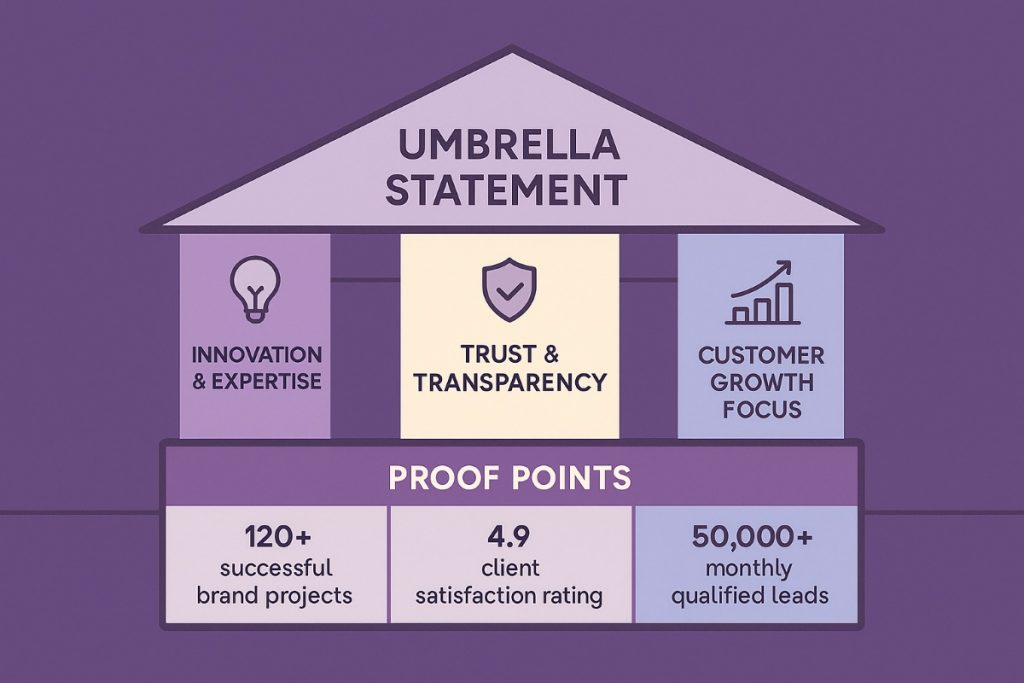
 Share
Share
 X
X
 LinkedIn
LinkedIn





